2,000 students were trapped in schools for the weekend in 1977 in Niagara Falls
Published December 3, 2022 at 6:45 am
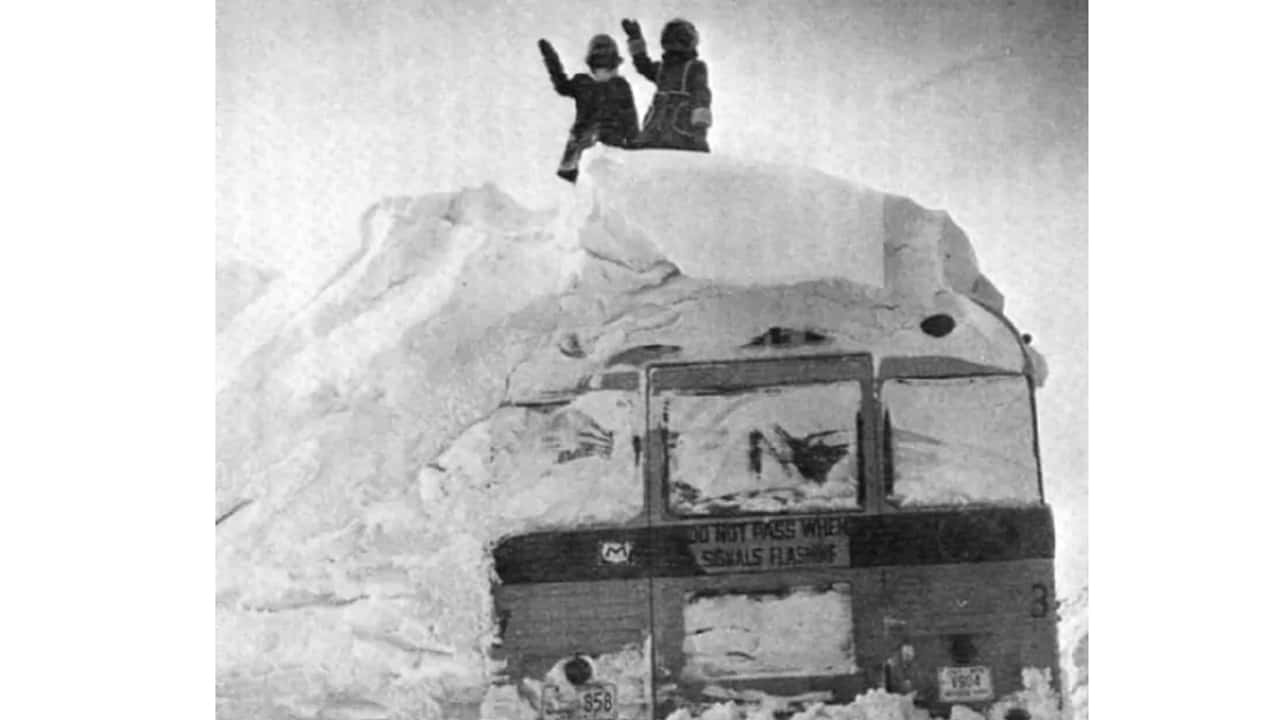
Residents in Niagara Region complaining about snow removal after Sunday-Monday’s snowstorm would not have enjoyed the Blizzard of 1977.
While this year’s version dumped 50 to 60 cms (20 inches to 2 feet) of the white stuff on the region (January’s average is 46 cm for the entire month), virtually stopping traffic and road access, it was a toasty day on a Bahama beach compared to January 28-February 1, 1977.
Here’s the thing. Most everyone who remembers the 1977 “weather event” forgets that Niagara had already seen 150 cm (five feet) of snow hit the region from Christmas Day 1976 to the first day of the blizzard.
An important part of what actually caused the Blizzard of ’77 in Niagara Region was that Lake Erie, the shallowest of the five Great Lakes, had been frozen over since mid-December. So how was a frozen lake connected to the single worst blizzard of that century? Here’s how…
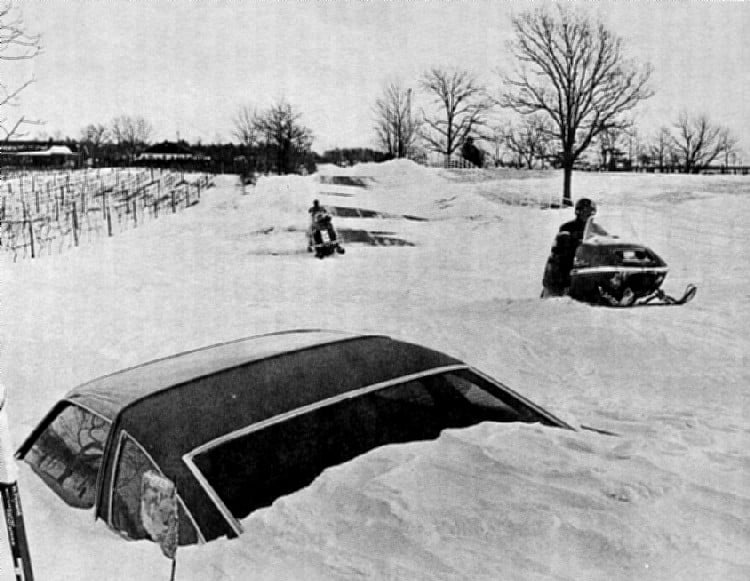
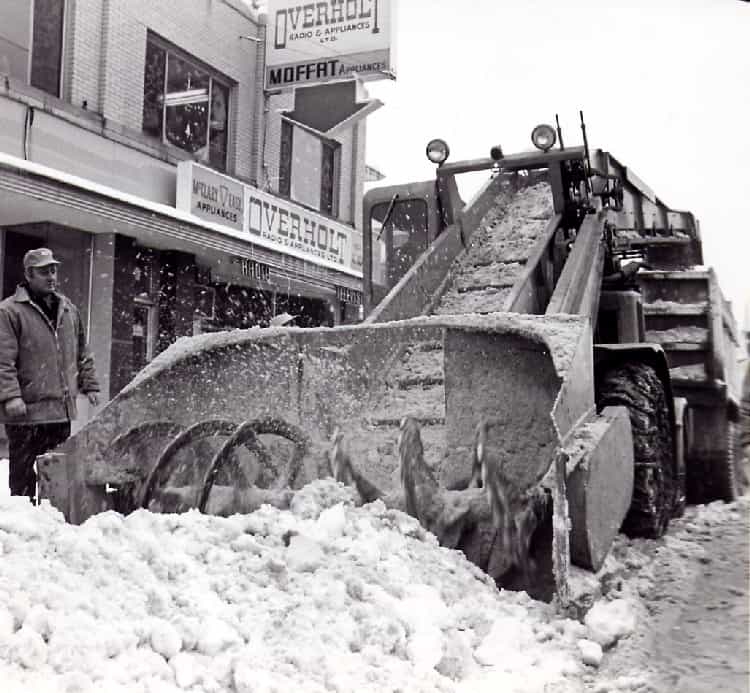
Cars were buried everywhere in Niagara Region and as you can see, plow technology, while
cutting edge at the time, was not capable of dealing with the Blizzard of 77. (All photos from
the Niagara Falls Public Library unless otherwise indicated.)
Friday, January 28, 1977 started like any other day. Students went to school, adults went to work – it was winter life as usual. That is, until about noon. Snow began to fall but with it came winds of up to 117 km/h (73 mph). That turned existing snow already on the ground into an integral part of the blizzard. That included the massive 25,000 square km of snow built up on frozen Lake Erie, blowing it inland.
The communities of Wainfleet, Port Colborne and Fort Erie, all situated on the Lake Erie shore, were almost instantly blinded with existing snow on the lake colliding with the freshly-falling stuff. Not only that, the windchill created by Arctic blast dropped the temperature to -46C (-51F).
People were hit with white-outs, were snow-bound, cars were completely buried and everyone was completely isolated from others, even next-door neighbours. High winds broke windows sending snow and ice into homes. Surprisingly, less than 10 Niagara residents died but livestock throughout the region literally froze to death.
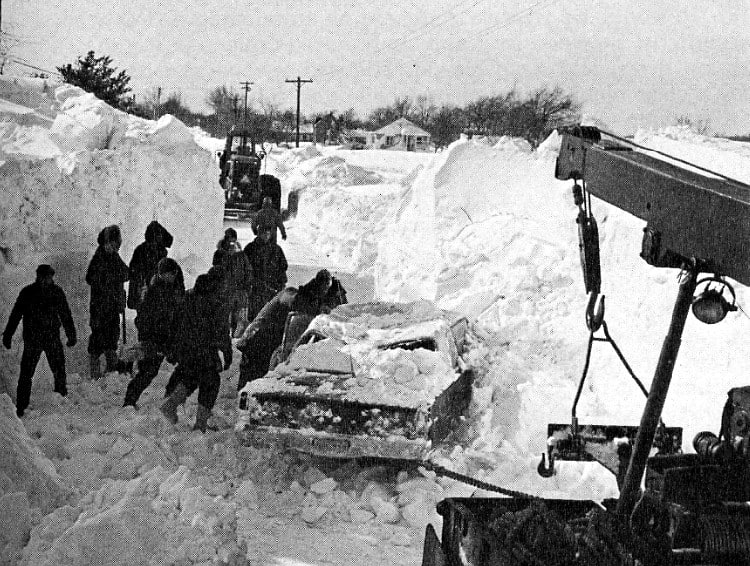
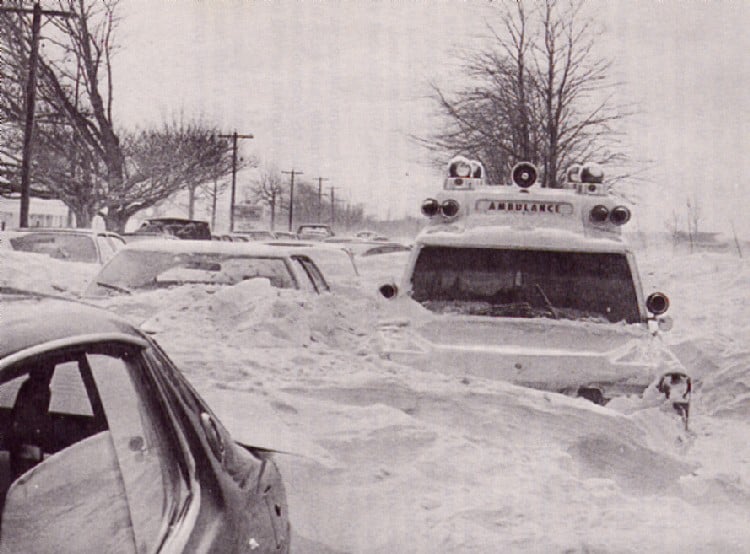
On the left, residents dig out a buried car while to the right, an ambulance is stopped cold after drifting snow trapped it and others in the blizzard. The driver of one of the cars had to escape through an open window.
By 3 pm, every municipality in Niagara Region was affected by the blizzard. Niagara Region declared a State of Emergency and called out through radio stations for snowmobilers to help find stranded motorists. The QEW between St. Catharines and Fort Erie was shut down, untraversable in the white-out.
According to a Niagara Falls Public Library post, “With so many stranded vehicles on the roadways, the snowplows were not able to clear the streets. Some snowplow operators reported shearing the tops off of buried cars that they could not see.”
“By Friday evening, about 100 machines were skimming over the drifts, rescuing people stranded in their cars and taking them to safety,” the post continued. “Inspector Earl Bray, who directed rescue operations said that snowmobilers rescued 150 motorists stranded on Thorold Stone Road alone and drove them all to safety, one by one.”
The Niagara Region superintendent of roads told reporters that he was “ready to contact his travel agent and head to Florida” as the blowing snow became drifts, burying everything from cars to bus stops in 20 to 40 feet of snow.
Over 2,000 children at 24 schools, who went to classes that morning, were trapped in their buildings under the care of their teachers until they were dug out at different points during the weekend. Joining them was another 700 students trapped at Niagara College.
When it was all said and done, there was an estimated $300 million in Niagara damages before the mess was cleared up the following week. That’s the equivalent of $1.78 billion in 2021 dollars. For those not around at the time or too young to remember, that number should give them an idea of the damage.
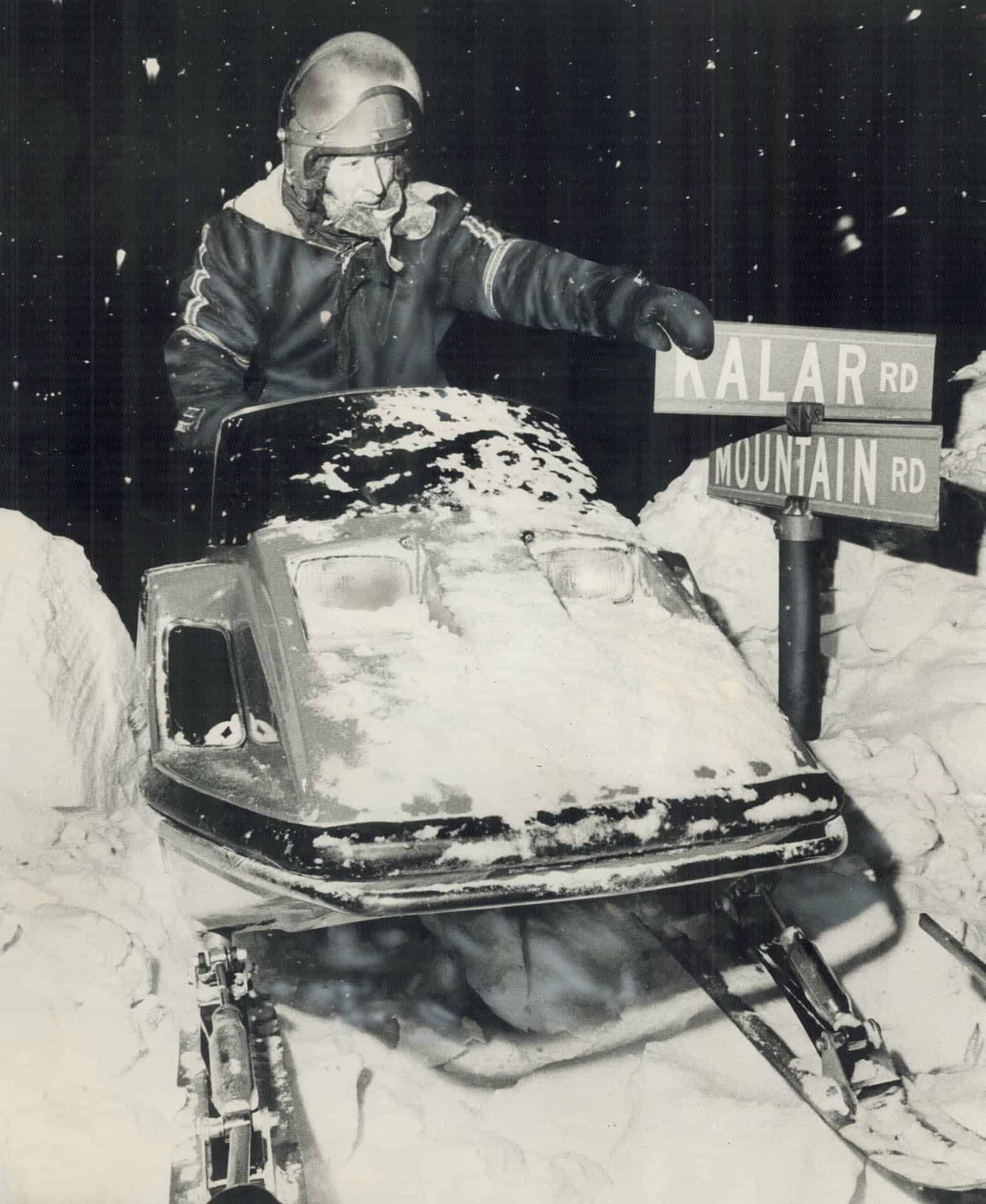
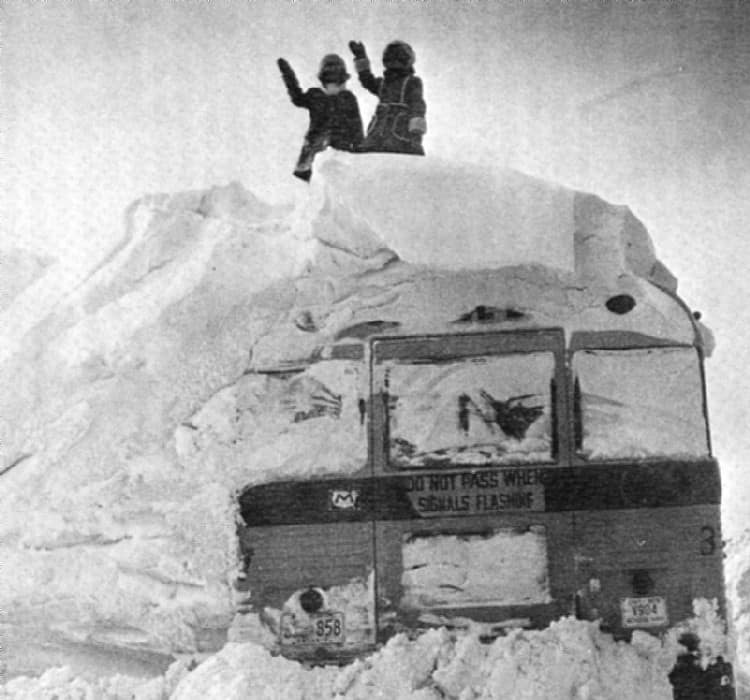
Above left, in a photo provided by Dougie Jay, a snowmobiler touches the top of the signs at the corner of Kalar and Mountain Roads in Niagara Falls. On the right, two children climbed a steep drift to the top of a Niagara school bus.






